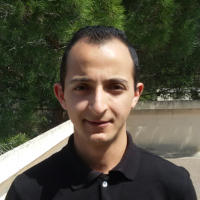Talk 1

Speaker
Fernando I. Ireta Muñoz (i3s)
Title
Life-long Navigation and Mapping for dynamic environments
Abstract
In this thesis a novel registration method called Point-to-hyperplane will be described, analyzed, compared and applied for pose estimation processes. The objective of this thesis is to investigate this general problem of visual mapping complex 3D environments that evolve dynamically over time and how to efficiently register and fuse the metric information obtained by a networked sensors. The aim is to build 3D models that can be employed for navigation task by locally and globally localizing sets of measurements obtained by different sensors. Therefore, in this thesis is provided a generalized framework of this novel method that investigate the problem for combining and fusing different types of measurements for pose estimation, which is widely employed for localization and mapping tasks in mobile robotics and computer vision. The proposed method allows to jointly minimize different metric errors as a single measurement vector with n-dimensions without requiring a scaling factor to tune their importance during the minimization process. Particularly, this thesis will focus on exploiting the proposed method for RGB-D pose estimation which consider color and depth information together. In this research, an increased convergence domain and a faster alignment w.r.t. classic approaches was demonstrated by considering a 4-dimensional vector (3D Euclidean Points + Intensities). Results in both, simulated and real environments, will be provided and it will be shown that the proposed method can be applied for a robust localization and an accurate mapping of complex environments. Finally, the performance of the method will be carried on visual SLAM and multi-view registration.
Contents:
Not available
Talk 2
Speaker
Yanis Boussad (DIANA)
Title
The Smart and the Phone, Inside your Smartphone
Abstract
Making calls, sending SMS, listening to music, writing emails, playing games…are actions we take for granted thanks to one single device: a smartphone. This tiny computer combines cellphone and PDAs capabilities making it a “smart” and a “phone” device at the same time. This talk is about the hardware and software organization of smartphone, presenting its “smart” and “phone” parts and the loose coupling between them. I’ll take the android smartphone as use-case to present it’s software stack and the internal communication mechanism that ensures availability of the aforementioned actions on a single device.
Contents:
https://phd-seminars-sam.inria.fr/files/2018/11/Inside-your-Smartphone_Boussad.pdf
